Other Mirfield Churches
St. John's Church - Upper Hopton
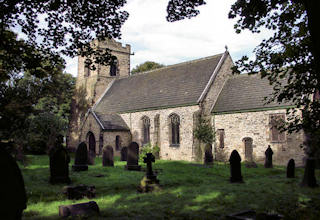
St. John's Church, Upper Hopton
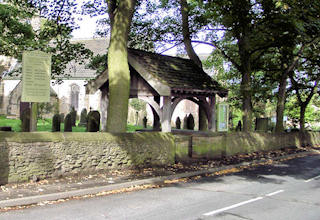
Lych Gate at St. John's Church
St John's Church, Upper Hopton stands next to Hopton Hall on land that was then owned by James Micklethwaite and was consecrated on 21st October 1846. It was built at a cost of £1200.00. In 1949, the lych gate at the entrance to the church grounds was built as a memorial to those from Upper Hopton who fell in World War Two.
St. Paul's Church - Eastthorpe
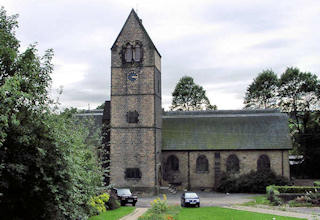
St. Paul's Church, Eastthorpe
St. Paul's Church is situated at Eastthorpe, set behind what was Eastthorpe Infants' and Girls' School. The foundation stone of the church was laid by Mr. R. Theodore Ingham of Blake Hall on January 25th 1881 which is the Feast of the Conversion of St. Paul. Astonishingly, this spacious church was completed in only ten months and was consecrated on November 1st 1881 by Bishop V. W. Ryan, sometime Bishop of Mauritius and later Dean of Westminster. It was originally intended that the Bishop of Ripon would officiate at the ceremony but he had to drop out due to ill health. The Service is said to have taken nearly three hours, and the congregation entered in a storm of sleet and rain, and came out to find several inches of snow on the ground. The first vicar of the completed church was Rev. John Riley who was appointed by the Vicar of Mirfield, the Reverend Ralph Grenside. The entire cost of building the church, which was estimated at £8000.00 was undertaken by three people, Mr. Thomas Charles Wheatley of Sands House, Mr. E. B. Wheatley Balme, and Mrs. Mary Hague of Crow Nest, Dewsbury.
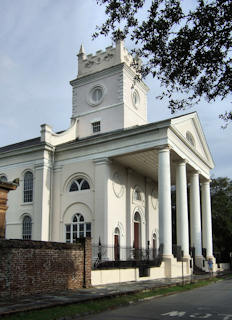
Charleston Cathedral, Charleston S.C.
The Tower Clock has two faces and was installed in 1882. A peal of six bells, cast by Taylor of Loughborough, was the joint gift of Mr. E. B. W. Balme and Mrs. Hague and was installed in the tower and dedicated in 1883. The bells were removed in the autumn of 1996 and in 1998 they were re-located by the Keltek Trust and taken to Charleston, South Carolina where they now hang in the tower of the Cathedral Church of St. Luke and St. Paul. More information on the bells is available on their website. The photo of Charleston Cathedral shown on the right is reproduced by courtesy of Dave Kelly of the Keltek Trust.

Former Eastthorpe School building
Several years ago a garden was created in front of St. Paul's church, where the school playground used to be, and is for the use of the people of Mirfield. Pictured left is the former school building and the gardens.
A parchment document kept in the church safe and written on the day of consecration includes the following quotation:
The HUMBLE PETITION of the FOUNDERS sheweth:
That we have erected this church with a special view to the spiritual benefit of the
older, the poorer, and the less well educated inhabitants of the Parish of Mirfield.
That we are convinced, by attentive observation during many years that the said
class of persons are much repelled from attending church by the practice now so
prevalent amongst the clergy of intoning the Prayers, so that 'the distinction of
sounds' (1 Cor. 14) by which one word is known from another, is obscured or lost.
That, though to persons to whom by education the words of the Service are familiar,
this indistinctness may be less important, to the class whom we have specially in mind,
the loss is great indeed. It is the loss of that benefit which our Church, following St.
Paul, has sought to secure for her children by requiring the Services to be said in
such a language as the people may understand. People cannot understand their mother
tongue when it is so uttered that they cannot distinguish one word from another. In
such case, as the Preface to the Prayer Book says: 'they hear with their ears only,
but their heart, spirit and mind are not edified thereby'.
We have no right, and we claim none, to impose any binding obligation. We do but
offer this our humble petition, and, knowing that our own time in this world needs be
very short, in handing over this church for consecration, we record, in this way, the
expression of our very ernest desire, the result of much painful experience.
Thos. Chas. Wheatley,
E. B. W. Balme"
Christ Church - Battyeford
The idea of a separate parish for Battyeford was put forward by the Reverend Ralph Maude. Plans were drawn up in 1838 by Mr. Benomi of Durham. The site on what is now Stocks Bank Road was given by Mr. Benjamin Wilson who also owned the land now in the possession of the Community of the Resurrection.
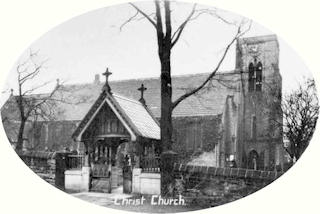
Christ Church, before the fire
Christ Church was built by Messrs. F. & E. Ellis, a local firm, with a west tower and at a cost of £1778. It was consecrated on October 28 1840 by the Bishop of Ripon. The parish was not constituted until one year later in November 1841 and the former curate of the Parish Church, the Reverend Thomas Nevin, became the first vicar.
The Tower Bell was added in 1843 and the Organ was installed in 1851. In 1858 the Font was given by Miss Fanny Wormald of Field Head. The Chancel was built in 1865/6 but a plan to replace the two side walks with a central alley had to be abandoned because of the prohibitive cost of re-arranging all the heating pipes.
Benjamin Wilson became vicar after the 19 years incumbency of the first vicar, Thomas Nevin, and held the living for the next 46 years. He is remembered as an outstanding vicar and died in retirement at Battyeford in 1923.
The church was damaged by fire in 1971 and had to be demolished. It was replaced with a new church 'Christ the King' which was consecrated on 22 September 1973.
The Lych gate was dedicated in 1905 to the memory of Sam Auty who had been church organist for 30 years. It still survives to this day although I feel that it looks a little incongruous standing as it does with its old fashioned charm in front of the new modern looking church building.
St. Peter's Church and Schoolroom
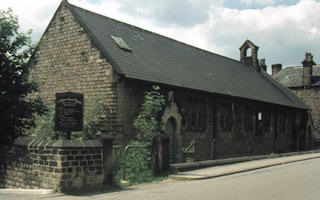
St. Peter's Church & Schoolroom
A misson at the Knowl was started sometime around 1868 and an endowment fund was started which raised £2000.00 to provide a second curate to work in that part of the parish. The need for an infants' school resulted in the erection in 1874 of the building pictured here which served as a Mission Church and school. In 1893 a wood and iron church was opened behind this building leaving it just for Day and Sunday School work. Both buildings have now been demolished and flats erected on the site of the schoolroom.
The Community of the Resurrection
 Community of the Resurrection
Community of the ResurrectionThe Community of the Resurrection was born from an idea of Dr. Charles Gore who saw the need for a different order of priests. The core would be a life of prayer and fellowship centred in the chapel bringing together the scholastic and evangelical spheres. As part of his dream he saw a college of ordinands, brought up in the atmosphere of community life, affiliated to a university. In 1892, Gore was joined by five other priests in Oxford and they set about forming the idea of the Community.
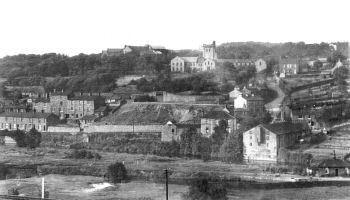
Early days of the Community
It had always been Gore's wish to establish the Community in the industrial north. The opportunity came when, in 1898, they were able to buy Hall Croft in Mirfield, a mansion built by the late Mr. Hague Cook, with spacious grounds and a quarry which was to become famous as a theatre for services and plays. Settled in Mirfield, the Community soon numbered twelve. It opened on October 28, 1902, when the former stables were converted into a college for training young men for the priesthood.
The people of Mirfield didn't know what to make of the unmarried clergymen who walked about in cassocks and belts and sometimes called the fathers 'petticoit men from T'Resurrection'. Then gradually the geniality of the members, particularly that of Father Paul Bull, broke down suspicion and opposition. A climax was reached when Kensitites from London held a protest meeting in front of the Black Bull, which gave Father Frere an opportunity to stand on a chair and address the crowd. He explained the aims and objects of the Community, and his inimitable whimsicality and captivating smile won the hearts of all, Anglicans and Nonconformists alike. Later, when the College began to play football on the Savile Arms Ground, prominent players became idols of the young football fans. The Quarry Services and Commemoration Day Festivals broke any remaining barriers.
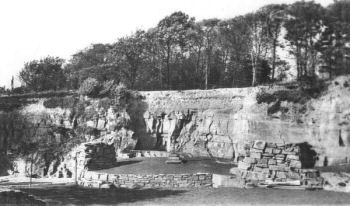
The Quarry Theatre
By 1907 the brethren had increased until there were nearly fifty fathers. All this time building operations were going on, for which stone from the quarry was used. Plans for a church were drawn up by Mr. Tapper and the foundations were laid in the Spring of 1911. The foundation stone was laid by Bishop Gore in a splendid service before a congregation of several thousands. Within a year the Chapel of the Resurrection was completed, with its copper barrel roof, and the first Eucharist was celebrated there on September 12, 1912.
Commemoration day is held every July and still draws thousands from all parts of the country to join in the services. The first play was performed in the Quarry theatre (pictured here) as part of the 'Commem' Day in 1909 but the plays no longer form part of the annual programme.
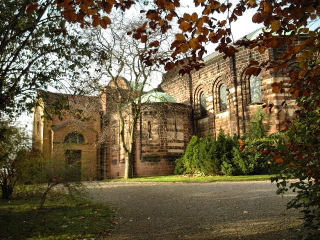
Church of the Resurrection
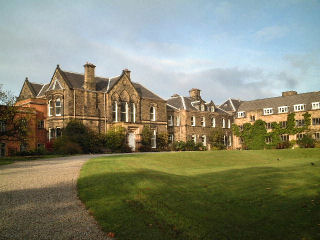
House of the Resurrection
The church is pictured on the left and the buildings pictured on the right are the living quarters.